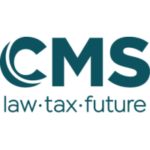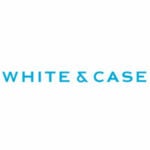-
What are the national authorities for banking regulation, supervision and resolution in your jurisdiction?
The following Swedish authorities are engaged with the governance of banks in Sweden:
- the Swedish Financial Supervisory Authority (Sw. Finansinspektionen) (“SFSA”);
- the Swedish Central Bank ( Riksbanken) (“Central Bank”);
- the Ministry of Finance ( Finansdepartementet);
- the Swedish National Debt Office ( Riksgälden) (“Debt Office”); and
- the Swedish Consumer Agency ( Konsumentverket).
The SFSA
With a view to promote a stable financial system, the SFSA is the Swedish authority tasked with monitoring the financial market. It supervises banks and financial institutions that conduct various forms of financial operations. The aim of the SFSA is ultimately to contribute to a sustainable development and a high level of consumer protection. It regularly publishes rules and guidelines for financial institutions, monitors compliance and performs risk analysis to achieve stability. The SFSA’s supervision is both on an institutional level (the micro perspective) and on a system level (the macro perspective).
The level of supervision that a bank or other financial institution is subject to is determined by the SFSA who classifies Swedish banks on an annual basis in accordance with EBA´s guidelines, on a scale from one to four, where one means that the bank is a systematically important bank and four means a smaller, non-complex bank. The category one banks are subject to supervision to a larger extent than category two banks and so forth.
In addition to national collaboration with various authorities the SFSA is involved with collaboration within the European Union (“EU”)/European Economic Area (“EEA”), mainly through the European Central Bank (“ECB”). The latest update on this topic came on 30 January 2023 when the SFSA announced that it had further strengthened its cooperation with the ECB through a joint memorandum of understanding with the ECB, amongst others, regarding cooperation on the area of bank supervision for the purpose of enabling an effective supervisory cooperation and information sharing.
The Central Bank
The Central Bank’s main functions are to ensure that inflation is low and stable over time (with the current target being 2 per cent per year, measured as the annual percentage change in the consumer price index with a fixed rate), to contribute to the stability and efficiency of the financial system and to make sure that payments can be made. In addition, the Central Bank issues Sweden’s banknotes and coins.
The Central Bank is governed by the Swedish Central Bank Act (2022:1568) (Sw. lag om Sveriges riksbank), pursuant to which the Central Bank has a supervisory function in relation to settlement-, payment- and clearing systems and in relation to other activities that are of particular importance for the financial infrastructure in Sweden.
The Ministry of Finance and the Debt Office
The Swedish Ministry of Finance is the entity mainly responsible for drafting laws and regulations for financial institutions and banks and for the financial system generally.
The Debt Office is the financial manager of the central government with the main focus of ensuring that taxpayers’ money is used as efficiently as possible and that the Swedish financial system remains stable. Their objective is thereby to minimize the costs of central government financial management, without taking excessive risks. It is involved with providing banking services for the central government, raising loans and managing central government debt, providing state guarantees and loans, securing the financing of nuclear waste management and managing government support for banks. It is also responsible for the Swedish deposit insurance and investor protection schemes.
The Swedish Consumer Agency
The Swedish Consumer Agency is the government agency in Sweden responsible for safeguarding consumer interests. One of its many functions is to supervise compliance with the Consumer Credit Act (2010:1846) (Sw. Konsumentkreditlagen) which applies to, amongst other things, financial arrangements that are offered and provided by companies to consumers.
-
Which type of activities trigger the requirement of a banking licence?
The Swedish banking regime is mainly governed by the Banking and Financing Business Act (2004:297) (Sw. lagen om bank- och finansieringsrörelse) (“BFA”) and the Banking and Financing Business Ordinance (2004:329) (Sw. förordning om bank- och finansieringsrörelse). The BFA defines banking business as:
(i) payment services via general payment systems; and
(ii) receipt of funds which, following notice of termination, are available to the creditor within 30 days.
Additionally there are certain regulations that are aimed at other specific financial activities which includes, amongst other things, savings banks through the Savings Banks Act (1987:619) (Sw. Sparbankslag), members’ banks through the Members’ Banks Act (1995:1570) (Sw. lag om medlemsbanker), financial institutions and entities involved with currencies exchanges through the Currency Exchange and Other Financial Activities Act (1996:1006) (Sw. lagen om valutaväxling och annan finansiell verksamhet) (“CFO Act”), mortgage institutions through the Mortgage Business Act (2016:1024) (Sw. lag om verksamhet med bostadskrediter), credit servicers through the Act on Purchase and Service of Non-Performing Credit Agreements (2023:714) (Sw. lag om förvärv och förvaltning av nödlidande kreditavtal) and consumer credit institutions through the Certain Consumer Credit-related Activities Act (2014:275) (Sw. lag om viss verksamhet med konsumentkrediter). On the basis of a banking license alone, however, many of the aforementioned activities may be carried out without the requirement of obtaining separate licenses.
-
Does your regulatory regime know different licenses for different banking services?
Yes, as mentioned above there are a number of authorisations and licenses that can be applied for and obtained. A banking license covers many of those activities whereas smaller players may opt to apply for individual licenses for the specific activities that are being contemplated.
-
Does a banking license automatically permit certain other activities, e.g., broker dealer activities, payment services, issuance of e-money?
If an entity has obtained a banking authorisation issued by the SFSA, such authorisation covers the permission to carry out financing activities naturally connected with banking. For example, such authorisation includes payment services and issuance of e-money. If, in addition, a bank wants to operate as a securities company and provide ancillary services, that bank would in addition need a license under the Swedish Securities Market Act (2007:528) (Sw. lag om värdepappersmarknaden).
-
Is there a “sandbox” or “license light” for specific activities?
A “sandbox” or “license light” has not been incorporated in Sweden. Instead, the Swedish license regime is more or less streamlined regardless of the size and complexity of the applying entity. As mentioned above, however, there are ways in which an entity which has obtained a banking license to operate as a payment service or financing business and vice versa.
-
Are there specific restrictions with respect to the issuance or custody of crypto currencies, such as a regulatory or voluntary moratorium?
The crypto market remained almost entirely unregulated within the EU prior to the implementation of the Regulation (EU) 2023/114 on markets in crypto-assets (“MiCA”) which became fully applicable on 30 December 2024.
MiCA
With a few exceptions, the MiCA applies to natural and legal persons that are engaged with the issuance, offering to the public and admission to trading of crypto assets together with crypto asset service providers. Its provisions include:
- disclosure requirements which entails drawing up, notifying the relevant authority and publishing of a “white paper” in order for an entity to be permitted to issue, offer to the public and seek admission to trading of crypto assets.
- for persons who are not credit institutions (as defined in Regulation (EU) 575/2013 and authorised under Directive 2013/36/EU) but who shall offer to the public or seek admission to trading of an asset-referenced token, there is an obligation to seek authorisation.
- with a few exceptions, only credit institutions and electronic money institutions (as defined in the Directive 2009/110/EC on the taking up, pursuit and prudential supervision of the business of electronic money institutions) may offer to the public or seek admission to trading of e-money tokens.
Regarding crypto asset services in particular, such as providing custody and administration of crypto assets, operating a trading platform for crypto assets and executing orders for crypto assets, such services will generally require authorisation under the MiCA unless the services are provided by certain financial entities. Further, crypto asset service providers will be subject to certain requirements aimed at their operations, organisation and general governance.
Sweden
The legislative steps taken in Sweden to implement MiCA can be summarized as follows:
- an act relating to the appointment of the national competent authority was passed on 22 May 2024. The SFSA was appointed as the national competent authority to handle all relevant applications for the authorisation of issuers of e-money tokens and asset-referenced tokens. The act entered into force on 30 June 2024.
- on 27 November 2024, the Swedish Parliament passed a new act with supplementary provisions to MiCA ( lag med kompletterande bestämmelser till EU:s förordning om marknader för kryptotillgångar (2024:1159)). The new act regulates, inter alia, the SFSA’s (as the national competent authority) supervisory and investigative powers, as well as its rights to take intervening measures. The act entered into force on 30 December 2024.
- certain existing laws have been amended. For example, crypto-asset service providers are now subject to direct regulation under the Swedish Money Laundering and Terrorist Financing Prevention Act (2017:630) (Sw. lag om åtgärder mot penningtvätt och finansiering av terrorism) and the CFO Act has been reduced to exclude administration and the trading of virtual currencies. These acts both entered into force on 30 December 2024.
In the current landscape, very few Swedish banks offers crypto currencies as an investment option. The crypto market is instead mainly centered at crypto exchanges or via brokers. At this point of time, the transparency of the crypto market is insufficient for banks to assess the viability of such trading in light of the various restrictions and supervisions they are subject to. This is particularly prominent when assessing compliance with consumer protection laws and regulations.
-
Do crypto assets qualify as deposits and, if so, are they covered by deposit insurance and/or segregation of funds?
Due to the lack of regulation there are still uncertainties in terms of the classification and handling of crypto currencies in contrast to national currencies which are subject to, amongst other things, provisions on consumer protection, such as deposit insurances (Sw. insättningsgaranti).
In terms of the segregation of funds, the Funds Accounting Act (1944:181) (Sw. lag om redovisningsmedel) regulates the handling of escrow funds (Sw. redovisningsmedel) which, in short, shall be kept and accounted for by banks to protect the funds against the bank’s insolvency. The term “funds” includes “money” which analogously apply to other fungible assets such as crypto assets according to the preparatory work preceding the act.
-
If crypto assets are held by the licensed entity, what are the related capital requirements (risk weights, etc.)?
No such capital requirements exists in Sweden. For general information regarding capital requirements for banks, see question 14.
-
What is the general application process for bank licenses and what is the average timing?
An application for a bank license shall be filed with the SFSA and shall include the information that is set out in applicable acts and SFSA´s regulations (see for example SFSA regulation (FFFS 2023:18) on authorisation for credit institutions outside the EEA to establish a branch in Sweden and for Swedish credit institutions to establish a branch outside the EEA). The application shall include, amongst other things:
(i) factual background information relating to the applicant;
(ii) details of the activities that are intended to be carried out;
(iii) details of individuals in certain management positions; and
(iv) financial statements.
Additional guidelines issued by the SFSA shall be considered if advisory services on financial matters are intended to be carried out by the applicant.
A fee in the amount of SEK 1,500,000 is payable to the SFSA by each applicant.
Provided that the application is complete and the fee is paid, the SFSA shall decide on the matter within six months from filing the application. If supplementary information is required by the SFSA in order to make a decision, the application process may be extended until the SFSA has received all information required.
-
Is mere cross-border activity permissible? If yes, what are the requirements?
Cross-border activity within the EU/EEA
The freedom of establishment and the freedom to provide services that follows from EU membership also guarantee free mobility of businesses and professionals, which in turn applies to banking activities. Consequently, if a foreign bank is authorised to conduct business in an EU member state, that entity shall be entitled to conduct cross-border business in Sweden as well. The BFA allows for a credit institution (which includes banks) to conduct business in Sweden both with and without a Swedish branch.
With a branch
If a credit institution having its domicile within the EU/EEA wishes to establish a branch in Sweden and conduct banking services, it must first notify the supervisory authority in its home country where the credit institution has its banking license. The homeland supervisory authority then assesses whether the information is complete and correct and notifies the SFSA that the credit institution intends to conduct business in Sweden. Within two months following a notification to the SFSA from the supervisory authority in the institution’s home state containing the following information:
- the programme for the intended activities in Sweden including, amongst other things, the organisation of the branch;
- the branch’s postal address and management; and
- the credit institution’s funds and solvency ratio,
the credit institution may commence financial activities through the branch.
Without establishing a branch
If a credit institution having its domicile within the EU/EEA wishes to conduct banking services in Sweden without first establishing a Swedish branch, the SFSA shall be notified and provided with information regarding the services which the institution intends to provide in Sweden from the supervisory authority in the institution’s home state.
Cross-border activity from outside of the EU/EEA
If a credit institution having its domicile in a country outside of the EU/EEA intends to conduct banking activities in Sweden, such institution must have a branch established in Sweden and must apply for authorisation with the SFSA pursuant to the BFA Chapter 4 Section 4. The SFSA´s regulation (FFFS 2023:18) on authorisation for credit institutions outside of the EEA to establish a branch in Sweden and for Swedish credit institutions to establish a branch outside of the EEA sets out information regarding the content of an application from the credit institution domiciled in the non-EU/EEA country.
-
What legal entities can operate as banks? What legal forms are generally used to operate as banks?
Pursuant to Chapter 3, Section 1 of the BFA, a bank license may be granted to Swedish limited liability companies (Sw. aktiebolag), co-operative associations (Sw. ekonomiska föreningar) and savings banks (Sw. sparbanker). The most prominent choice of legal entity on the Swedish banking market is a limited liability company.
Pursuant to Chapter 3, Section 3 of the BFA, a limited liability company shall upon commencement of the banking activities have an initial capital which corresponds to not less than five million euro as at the time of the decision regarding the authorisation from the SFSA.
-
What are the organizational requirements for banks, including with respect to corporate governance?
Organisational requirements
Chapter 6 of the BFA sets out organisational requirements for bank activities and further guidance may be found in SFSA´s regulation (FFFS 2014:1). In summary, the activities shall be organised such that:
(i) the bank’s structure, connections to other undertakings and financial position may be reviewed and assessed;
(ii) there is a clear distinction between the different roles of the employees and divisions within the bank so that the SFSA is able to efficiently supervise the bank;
(iii) there are be internal control mechanisms in place which shall relate to IT systems and processes;
(iv) employees have competence to perform their respective tasks;
(v) information is stored for at least five years; and
(vi) no person has permission to handle a transaction alone throughout the entire process of the transaction.
Corporate governance
The activities of a bank shall be conducted in such a manner that the banks´ ability to perform its obligations is not jeopardised and banks shall be able to identify, measure, control, internally report on and verify the risks associated with its activities. Additionally, a bank shall:
(i) have recovery plans/group recovery plans and a risk strategy in place;
(ii) have IT systems and routines to protect confidentiality, assurance and availability;
(iii) have internal rules for governance of the organisation and such rules shall be adjusted taking into account the nature, scope and complexity of the business; and
(iv) ensure that satisfactory internal controls are in place.
Evaluations shall regularly be carried out by the board and the managing director in relation to the bank’s ability to control and manage its risks in an efficient and effective manner.
-
Do any restrictions on remuneration policies apply?
There are a number of restrictions on remuneration policies set out in the BFA and regulations issued by the SFSA. These restrictions are in general application with a few exemptions in cases where e.g. the institute in question is of systemic importance. A few general examples are as follows:
(i) variable compensation to employees within banks may not exceed the fixed compensation if the employee´s position or total compensation level entails that the relevant person has a material impact on the bank’s risk profile;
(ii) banks must ensure that the total variable compensation to employees does not limit the ability to maintain a sufficient capital base;
(iii) a bank is not permitted to provide a guaranteed variable remuneration, save for in conjunction with new employments and if there are special reasons for it. Such compensation must also be limited to the first year of the employment;
(iv) a bank shall provide information on its website on how the bank meets the requirements regarding compensation policies;
(v) if a bank grants variable compensation to employees, the bank shall ensure that there is an appropriate proportion between the fixed and variable parts of the remuneration;
(vi) a bank shall ensure that at least 40 per cent of the variable compensation to an employee whose duties have a significant impact on the risk profile of the bank, is deferred for at least four years before the compensation is paid to the employee. When determining the period for the postponement of the compensation, the bank should consider the business cycle of the bank, risks entailed by the business activities, the employee’s responsibilities and duties as well as the size of the variable remuneration;
(vii) banks shall ensure that at least 50 per cent of any variable compensation employees whose duties have a significant impact on the risk profile of the bank, consists of shares in the bank (or other equivalent instruments);
(viii) a bank must have a remuneration policy in place covering all employees in the bank and which shall be updated and reviewed regularly. The policy shall be compatible with and stimulate a sound and an efficient risk management. The board is responsible for adopting the policy and the policy shall set out, inter alia, the following:
- principles for determining fixed and variable remuneration;
- remuneration levels to the executive management and employees who have an overall responsibility for the control functions;
- measures to follow up the compensation policy; and
- information regarding how large the variable compensation may be at most com-pared to the fixed proportion of the compensation, for all categories of employees who can receive variable remuneration (and exceptions to these conditions shall be approved by the board in each individual case).
-
Has your jurisdiction implemented the Basel III framework with respect to regulatory capital? Are there any major deviations, e.g., with respect to certain categories of banks?
Yes, mainly through EU regulation. The relevant EU regulation, being Regulation (EU) No 575/2013 on prudential requirements for credit institutions and investment firms (“CRR”) is directly applicable in Sweden and Directive 2013/36/EU on access to the activity of credit institutions and the prudential supervision of credit institutions and investment firms (“CRD”), has been implemented in Sweden through the Credit Institutions and Securities Companies Special Supervision Act (2014:968) (Sw. lag om särskild tillsyn över kreditinsitut och värdepappersbolag) (“Special Supervision Act”), the Cap the Capital Buffers Act (2014:966) (Sw. lag om kapitalbuffertar) and through various regulations issued by the SFSA.
Additionally, there are options for the SFSA to implement further buffers to target systemically important institutions and has decided to introduced a systemic risk buffer of three percent of the total risk-weighted exposure amount that applies to the three major Swedish banks. The buffer must be covered by CET 1 capital. The SFSA may also reciprocate systemic risk buffers implemented by other countries, which can lead to a buffer that exceeds three percent.
Initial capital required varies depending on the category of the institution, in accordance with the below thresholds:
(i) not less than five million EUR; credit institutions (such as banks) and members’ banks and a credit market companies; and
(ii) not less than one million EUR; savings banks.
-
Are there any requirements with respect to the leverage ratio?
During 2021, a leverage ratio requirement for banks was introduced in Sweden, being three per cent. This requirement is based on the Basel III Framework and has remained applicable in Sweden since its introduction. The ratio differs from other capital requirements as it does not take into consideration the underlying risks in the assets of the bank. In addition to the binding requirement, the SFSA may establish a Pillar 2 guidance requirement on a leverage ratio buffer which in practice is a supplement to the minimum requirement. According to the rules for the Pillar 2 guidance, the SFSA shall communicate to the affected banks what is considered a suitable level for each bank’s own funds to cover.
-
What liquidity requirements apply? Has your jurisdiction implemented the Basel III liquidity requirements, including regarding LCR and NSFR?
As mentioned above, CRR and CRD have been implemented in Sweden and sets out liquidity requirements which includes liquidity coverage ratios and net stable funding ratios (the “LCR Regulation” and “NSFR Regulation” respectively).
Compliance with the LCR and NSFR Regulations are required by Swedish banks with the primary focus being on how banks’ assets and liabilities mature in each of two determined time intervals. Pursuant to the LCR Regulation the liquidity requirement is 100 per cent LCR, meaning in practice that a bank shall have enough liquid assets to handle real and simulated cash outflows during a stressed period of 30 days. According to article 8.6 of the LCR Regulation, there is a general requirement that the currency composition of the liquidity buffer must be in line with the net outflows per currency. If an imbalance occurs in the relationship between the currency composition of the liquidity buffer and the net outflows in individual currencies, the SFSA may require a bank to limit the imbalance by setting limits on the percentage of liquid assets in a currency that a bank can credit to cover liquidity outflows in another currency.
The NSFR requirement is 100 per cent and means that a bank in practice shall have sufficient stable funding to cover its financial needs during a one-year period under both a normal and a stressed scenario.
-
Which different sources of funding exist in your jurisdiction for banks from the national bank or central bank?
The banks in Sweden are mainly funded by deposits from the public and through market funding by issuing secured bonds. Funding by the Central Bank is a part of its responsibility to work towards a stable and efficient financial system and includes providing liquidity support to banks for the purpose of counteracting a severe disturbance in the financial system according to the Swedish Central Bank Act. An example of such a disturbance may be the risk of financial difficulties spreading between the financial market participants. There are mainly three sources of funding from the Swedish Central Bank in such situations:
- deposit and lending facilities (Sw. stående in- och utlåningsfaciliteter), which refers to the possibility for the banks of borrowing or depositing money with the Central Bank overnight to cover a sudden need of liquidity.
- general liquidity support (Sw. generellt likviditetsstöd), which typically refers to the Central Bank’s ability to offer collateralized credit to a broader group of banks and financial institutions.
- special liquidity support (Sw. särskilt likviditetsstöd), which refers to the Central Bank’s ability to offer collateralized credit or credits under other special conditions (Sw. nödkredit) to individual companies with temporary liquidity needs. In this case, the Central Bank will adapt the requirements of collateral to the company-specific conditions.
-
Do banks have to publish their financial statements? Is there interim reporting and, if so, in which intervals?
Banks are required to publish their financial statements on a yearly basis, as well as interim reports at least once during a financial year that includes more than ten months, pursuant to the Act on Annual Reports in Credit Institutions and Securities Companies (1995:1559) (Sw. lag om årsredovisning i kreditinstitut och värdepappersbolag) and the Act on Annual Reports (1995:1554) (Sw. årsredovisningslagen). As some of the Swedish banks are admitted to trading on a stock exchange, there are also obligations for banks to publish quarterly reports on their websites in accordance with stock exchange rules.
The Swedish Companies Registration Office (Sw. Bolagsverket) is the responsible authority of the registration of annual reports, and the reports registered with the authority are publicly available.
-
Does consolidated supervision of a bank exist in your jurisdiction? If so, what are the consequences?
The CRR and CRD, as further described above, provide for certain measures for consolidated supervision. By way of examples, the CRR requires banks to report on data on a consolidated basis in relation to liquidity, own-funds, eligible liabilities, capital requirements, leverage, solvency ratios, exposure limits and certain arrangements concerning exposures to transferred credit risks. Further, the CRR allows for consolidated supervision of a parent company within the EU and its subsidiaries provided that certain conditions are met. Such parent company and its subsidiaries must implement appropriate organisational structures and internal control mechanisms in order to ensure that the data required for consolidated supervision is correctly processed and forwarded to the supervisory authority.
Further, pursuant to Chapter 4, Section 1 in the Special Supervision Act, the SFSA supervises the group level requirements as set out in Chapter 3 in the Special Supervision Act. A group level supervision is triggered if the parent company is a credit institution or a securities company and the subsidiary is a credit institution. Further, the group level rules require that a parent company can ensure that requirements regarding equity ratio and risk management set forth in the BFA are satisfied on a consolidated basis.
The SFSA shall submit a report in cases where it is responsible for the consolidated supervision on a group level, containing mainly a risk assessment of the consolidated situation, to other relevant supervisory authorities within the EU/EEA. Further, the SFSA shall pursuant to Chapter 4, Section 5 in the Special Supervision Act, within four months from the date on which the SFSA has submitted the report, attempt to reach an agreement with the other relevant supervisory authority in terms of:
- the specific liquidity requirement in Chapter 2, Section 2 of the Special Supervision Act; and
- whether the own funds on a consolidated basis are sufficient taking into consideration the financial situation and the risk profile and regarding the level of own funds required under Chapter 2, Section 1, and 1 c of the Special Supervision Act, on an individual basis or consolidated basis.
If a company fails to fulfil the requirements of the Special Supervision Act, the SFSA shall order the company to e.g. limit the scope of its activities to some extent within a certain period of time to reduce the risks involved or take any other measures necessary to rectify the situation. There are similar requirements for investment firm groups in Chapter 4a of the Special Supervision Act.
The possible benefits of being able to carry out consolidated supervision are:
- an increased ability for the SFSA to take a meta perspective of the financial situation of a group; and
- a possibility for the SFSA to monitor and supervise how the banks act and identify banks that attempt to escape from financial compliance requirements by transferring activities into its subsidiaries.
-
What reporting and/or approval requirements apply to the acquisition of shareholdings in, or control of, banks?
An approval from the SFSA must be obtained prior to a direct or indirect acquisition of shareholdings in a credit institution (which includes banks), when the acquisition results in the acquirer’s total holding in the bank to constitute a qualified holding (Sw. kvalificerat innehav). The shareholding is to be defined as qualified if it represents 10 per cent or more of the shares or voting rights of the bank, or otherwise enables the acquirer to exercise a significant influence over the management of the bank. The requirement of approval also applies if the acquisition of shareholdings in the bank increases the acquirer’s already existing qualified holding to the extent that it equals or exceeds 20, 30 or 50 percent of the capital or the total amount of voting rights, or to the extent that the bank becomes a subsidiary of the acquirer.
The approval from the SFSA is preceded by an owner assessment (Sw. ägarprövning) where the authority assesses the suitability of the acquirer to exercise a significant influence over the management of the bank as well as the economic soundness of the intended acquisition. The approval should be communicated with the acquirer within 60 days after the day of the confirmation of receipt of a complete application.
As soon as the bank becomes aware of an acquisition of shareholdings leading to a qualified holding, the bank shall report the acquisition to the SFSA. The same reporting requirement applies to a sale of a qualified holding, for both the transferor and the bank.
In addition to the reporting requirements connected to qualified holdings, there are a notification obligation regarding acquisitions and sales of shares or other financial instruments in publicly traded companies in relation to certain thresholds (Sw. flaggning), which includes acquisitions and sales of shareholdings in banks who are admitted to trading on a stock exchange. The obligation to notify the SFSA originates from the European Union’s Transparency Directive and entails that a transaction should be notified to the SFSA if it reaches, exceeds or falls below 5, 10, 15, 20, 25, 30, 50, 66 2/3 or 90 percent of the total voting rights or amount of shares in the company. The notifications are furthermore published by the SFSA.
Furthermore, the Foreign Direct Investments Act (2023:560) (Sw. lag om om granskning av utländska direktinvesteringar) states an obligation to notify the Inspectorate of Strategic Products (Sw. Inspektionen för strategiska produkter) when there is an intention from a legal entity outside of the EU to directly or indirectly invest in protected activities (Sw. skyddsvärd verksamhet) in Sweden, and the investment would lead to a significant influence over the company’s activities in certain ways. Examples of such an influence are if the investment would lead to an acquisition of the company or if it would result in the investor holding voting rights that corresponds or exceeds 10, 20, 30, 65 or 90 percent of the total voting rights in the company conducting such activities.
Protected activities includes, inter alia, activities that are essential for the function of society and the purpose of the regulation is to prevent foreign direct investments that could be harmful to Sweden’s security, public order or public safety. Activities conducted by credit institutions, including banks, are considered to be such protected activities according to Swedish Civil Contingencies Agency (Sw. Myndigheten för samhällsskydd och beredskap). A foreign investment in a bank must therefore obtain an approval of the Inspectorate of Strategic Products. After a notification of the intention of the investment is made, the authority shall leave the application without action or initiate a screening within 25 business days from the date on which it has received a complete notice. If screening is initiated, the general rule is that the authority shall decide whether the investment is to be authorised or prohibited within three months.
-
Does your regulatory regime impose conditions for eligible owners of banks (e.g., with respect to major participations)?
In connection with the approval of the acquisition of a qualified shareholding in a bank the SFSA conducts, as mentioned above, an owner assessment which entails an assessment of the suitability of the acquirer to exercise a significant influence over the management of the bank as well as the economic soundness of the intended acquisition. Specific factors considered by the authority include, inter alia, the acquirer’s reputation, capital strength, relevant experience and knowledge for the management of the credit institution as well as potential connections with money laundering and financing of terrorism. The authority collects relevant information from Swedish authorities, such as the Swedish Companies Registration Office, the Police Authority (Sw. Polismyndigheten), the Swedish Enforcement Authority (Sw. Kronofogdemyndigheten) and the Swedish Tax Agency (Sw. Skatteverket), but also foreign supervisory authorities where applicable.
Furthermore, there are reporting requirements of the ultimate beneficial owners (Sw. Verkliga huvudmän) of the bank to the SFSA according to anti-money laundering regulation. However, companies whose shares are admitted to trading on a stock exchange are exempted from such a reporting requirement.
-
Are there specific restrictions on foreign shareholdings in banks?
Foreign investments in banks could be prohibited by the Inspectorate of Strategic Products if the investment would pose a risk to be harmful to Sweden’s security, public order or public safety according to the Foreign Direct Investments Act.
Furthermore the SFSA’s regulation on the assessment of ownership and management (Sw. ägar- och ledningsprövningar) could restrict foreign shareholdings in bank as it applies to any legal or natural person intending to acquire a qualified shareholding regardless of the acquirer’s nationality.
-
Is there a special regime for domestic and/or globally systemically important banks?
The banks that are considered systematically important are either critical to the fundamental functions of the financial system or such entities whose liquidation could lead to serious disturbances in the financial system. The systematically important banks are monitored by the SFSA and the Debt Office.
The SFSA identifies the systematically important banks according to the guidelines of the European Bank Authority (“EBA”) and reviews the requirement of a systemic risk buffer for such banks every second year in accordance with the CRD. As described above, the systemic risk buffer for the major banks to maintain is currently set at three per cent at group level.
The Debt Office handles systematically important banks and plans for resolution for such banks when they fail or risk to fail. It has identified eight systematically important banks that should be subject to resolution in the event of a crisis. In its work with resolution plans the Debt Debt Office reviews the banks’ compliance with certain requirements of capital base and qualified debt as well as the compliance with EBA’s guidelines for improving the possibility of resolution, and furthermore analyses the institutions’ activities and their importance to the financial system. The resolution plan results in a plan on how each individual bank should be handled in a possible crisis.
-
What are the sanctions the regulator(s) can order in the case of a violation of banking regulations?
The SFSA can intervene in case of a violation of the bank’s responsibilities under banking regulations, the articles of association or other statutory mechanisms based on official legislation of the bank’s activities which govern their responsibilities. The sanctions regime is structured as follows:
- for less serious infringements of a bank’s responsibilities under the banking regulations, the SFSA can issue
- an order (sw. föreläggande) to, inter alia, take risk-minimizing measures or refrain from dividends under a certain period of time to remedy the situation,
- an injunction (sw. förbud) to execute an order or resolution, or
- an adverse remark (sw. anmärkning).
- where the bank’s infringement is considered to be severe, the SFSA can issue a warning if deemed sufficient, or ultimately, revoke the banking license. The sanction of revoking the banking license can be combined with an injunction against a continued operation of the business.
- the SFSA can also combine a decision to issue an adverse remark or a warning with a punitive fine (sw. sanktionsavgift).
- for less serious infringements of a bank’s responsibilities under the banking regulations, the SFSA can issue
-
What is the resolution regime for banks?
The resolution process for banks in Sweden is governed by the Resolution Act (2015:1016) (Sw. lag om resolution). The Debt Office is the responsible authority. The Resolution Act governs the resolution procedure carried out by the Swedish state in terms of reconstruction or winding up of financial activities. The procedure aims to, amongst other things, maintain financial operations that are critical to the society and financial system and to protect the financial stability.
The resolution regime contains provisions on the authority’s responsibility of establishing recovery and resolution plans and gives the authority a right to order the financial company in question to remove obstacles in its operations to enable the resolution. The resolution procedure is a way to avoid that a failing bank goes bankrupt and the consequences that would follow of such a state in light of the bank’s importance to the financial system, by letting the Swedish state take control over the bank and manage it during the crisis. The resolution regime allows the for the Debt Office to take measures such as transferring assets and liabilities, shares or other ownership instruments of the institution to an entity which is wholly, partially or not owned by the Swedish state and write down liabilities of the institution.
-
How are client’s assets and cash deposits protected?
Clients’ cash deposits are ultimately protected by a deposit insurance (Sw. insättningsgaranti) provided for by the Swedish state pursuant to the Swedish Deposit Insurance Scheme Act (Sw. lag (1995:1571) om insättningsgaranti), which in turn is based on the Directive 2014/49/EU on deposit guarantee schemes (recast). A deposit is protected by the deposit insurance if placed with a Swedish institute and is covered by the deposit insurance:
- through a decision of the SFSA finding that a deposit due for payment have not been repaid by the bank, or that the bank’s inability to pay is connected to the bank’s financial situation which is not temporary, or
- by declaring the institution into bankruptcy.
Provided that the deposit qualifies for the insurance, the bank’s clients are entitled to compensation equal to the deposited amount, including interest, up to an amount of SEK 1,050,000, up to the date on which the right to compensation arose per person and institute. It is possible to apply for an increased compensation up to SEK 5,000,000, if the deposits are related to certain life events, such as the sale of a home. If an account has two or more registered holders, each account holder is accounted for separately. All private persons, companies and other legal entities are covered by the deposit insurance, with an exemption of financial institutions and public or local authorities. Furthermore, the insurance does not apply to savings in the form of securities funds, securities, insurance plans or individual person savings plans. The compensation through the insurance is not affected by the customer’s eventual debts to the bank.
The clients’ assets are furthermore protected through the investor protection (Sw. investerarskyddet) and becomes relevant if a financial institution is declared bankrupt and unable to return the clients’ assets, in light of the obligation for financial institutions to keep their own assets separated from their clients. When the bank fails to do so and hence cannot return the clients’ securities in a state of bankruptcy, the clients can be compensated by the Swedish State for up to an amount of SEK 250 000. The investor protection applies to all clients, including private persons, companies and other legal persons and covers securities and money which is handled in banks’ provision of investment services to their customers.
-
Does your jurisdiction know a bail-in tool in bank resolution and which liabilities are covered? Does it apply in situations of a mere liquidity crisis (breach of LCR etc.)?
A bail-in tool, whereby authorities may intervene when banks face financial difficulties, has followed by Sweden’s implementation of Directive 2014/59/EU on establishing a framework for the recovery and resolution of credit institutions and investment firms (“BRRD”), through the Resolution Act and the SFSA’s regulation (FFFS 2016:6). In practice, this bail-in tool authorises the Debt Office to, in combination with other measures, write down a bank’s liabilities to absorb losses or to recapitalise the bank by converting liabilities to equity according to a specific order of priority.
Triggers for a resolution (bail in)
Pursuant to Chapter 3, Section 10 of the Resolution Act, the Debt Office shall when drawing up a resolution plan for a bank assess if it is feasible to either restructure or liquidate the bank under normal insolvency proceedings or resolve it through a resolution in a way that does not have any significant adverse effect on the financial system within the EU/EEA. The content of and procedure for this assessment is regulated in more detail in the Resolution Ordinance (2015:1034) (Sw. förordning om resolution) and in the EU Delegated Regulation 2016/1075.
The Debt Office shall pursuant to Chapter 8 Section 5 in the Resolution Act take adopt a resolution provided that all of the following requirements are met:
- the SFSA has determined that the institution would fail if the institution breaches its capital requirements, the institution becomes unable to pay its obligations as they fall due or requires government funding under certain circumstances, or that it is likely that the institution will fail;
- there are no alternative measures that would remedy or prevent the institution from defaulting within a reasonable time; and
- the resolution is necessary considering public interests, taking into account if the winding up of the institution through bankruptcy would achieve the objectives of the resolution to the same extent.
Liabilities covered
The prerequisites for the bail-in tool to have the desired effects are that banks musts, when entering into resolution, have sufficient levels of funds and debt instruments enabling the resolution authority to carry out the bail-in and, for example, that there are requirements on minimum amounts of loss-absorbing capacity. Rules specifying the types of debt instruments that a resolution authority can use for bail-in and which it cannot have also been implemented. From this follows that there are certain debt claims that are (from an operational or political perspective) deemed inappropriate to bail-in. Additionally, only certain claims are susceptible to write-downs (also known as eligible liabilities). Pursuant to the BRRD, the following liability classes are exempt from bail-in and will thus neither be written down nor converted into equity:
(i) interbank deposits with original maturities of less than seven days;
(ii) secured liabilities; and
(iii) certain other minor classes of liability such as obligations to employees and accounts payable.
-
Is there a requirement for banks to hold gone concern capital (“TLAC”)? Does the regime differentiate between different types of banks?
The Financial Stability Board in consultation with the Basel Committee published the international standard for total loss-absorbing capacity (“TLAC”) which is applicable to systemically important banks, and the TLAC has further been implemented within the EU through revised rules on capital requirements, liquidity and resolution in CRR II, CRD IV, CRD V and BRRD II, amongst others.
TLAC requires “Global Systemically Important Institutions (G-SIIs)” to hold an adequate amount of highly loss absorbing (bail-in eligible) capital and debt instruments available that can be “bailed-in” (written down or converted into equity to absorb losses and recapitalise) in the event of a resolution.
-
Is there a special liability or responsibility regime for managers of a bank (e.g. a "senior managers regime")?
The liability regime for managers of a bank is connected to a bank’s failure to comply with key obligations under the Banking and Financing Business Act. The SFSA may in such a case dismiss a board member or CEO of a credit institution (including banks) of its position or impose punitive fines against them for infringements committed by the bank, if the individual is considered to be responsible for the infringement.
The types of breaches that may give rise to personal liability are, amongst others, failing to comply with the institution’s different reporting obligations to the SFSA, the disclosure of false information to the SFSA and failing to comply with the license requirements. The liability is incurred if the bank’s infringement of its obligation is considered to be severe and the manager concerned has caused the infringement intentionally or through gross negligence.
-
In your view, what are the recent trends in bank regulation in your jurisdiction?
The transition to a sustainable and green society in whole means changes in several areas, including, among others, the shift to a sustainable economy and financial market. A vast majority of the Swedish banks are already part of this transition, fueled by increased customer demand of sustainable financial products and regulatory requirements to consider, analyse, and manage the different risks associated with investments that are not green or sustainable. Going forward and as part of this trend we may see additional national regulation motivated by ESG and climate viewpoints.
However, due to recent political development outside Sweden, which challenge the prevailing perspective on ESG and climate related matters, we anticipate that a counterforce to the current development may be building and affect the evolution of this regulatory space also in Sweden. Separately, in keeping with the focus on household indebtedness as a key financial risk in Sweden, there are several recent legislative proposals designed to combat the build-up of consumer debt. Among these proposals, it is particularly worth noting the proposed new restrictive regime for consumer credit providers and intermediaries, which provides, subject to exemptions, that only banks will be allowed to carry out such business in Sweden going forward. The proposal is still being debated, especially as to whether the new licensing regime shall cover consumer debt intermediation or not.
-
What do you believe to be the biggest threat to the success of the financial sector in your jurisdiction?
Challenges to financial stability
Currently, a great risk in the financial system in Sweden according to the Central Bank is the Swedish banks’ exposure to the highly indebted commercial property sector. Also, a relatively high level of indebtedness in relation to private households makes the financial system vulnerable. The recent development in respect of interest rates and inflation, along with geopolitical insecurities and the economic development at large, entails an increased risk for credit losses among Swedish banks and thus poses challenges for the stability of the financial system in Sweden and globally. These circumstances mean that both foreign as well as Swedish authorities with financial stability responsibilities have to monitor developments closely and be prepared to initiate actions if the financial situation so requires.
A continuing risk of cyber attacks
The digitalisation of the financial sector in Sweden over the past decade has led to an increasing risk of cyber-attacks occurring in the banking sector. The risk of cyber-attacks is generally viewed as a great threat to the success of the financial sector in Sweden and globally, increasing the demands of resources and efforts by banks to prepare for and combat such risks. The Central Bank has emphasised that it is important to rapidly strengthen the ability to prevent, detect and manage cyber risks in the banking sector, which further echoes the objectives of the regulatory initiatives in this space (notably the European Digital Operational Resilience Act).
Sweden: Banking & Finance
This country-specific Q&A provides an overview of Banking & Finance laws and regulations applicable in Sweden.
-
What are the national authorities for banking regulation, supervision and resolution in your jurisdiction?
-
Which type of activities trigger the requirement of a banking licence?
-
Does your regulatory regime know different licenses for different banking services?
-
Does a banking license automatically permit certain other activities, e.g., broker dealer activities, payment services, issuance of e-money?
-
Is there a “sandbox” or “license light” for specific activities?
-
Are there specific restrictions with respect to the issuance or custody of crypto currencies, such as a regulatory or voluntary moratorium?
-
Do crypto assets qualify as deposits and, if so, are they covered by deposit insurance and/or segregation of funds?
-
If crypto assets are held by the licensed entity, what are the related capital requirements (risk weights, etc.)?
-
What is the general application process for bank licenses and what is the average timing?
-
Is mere cross-border activity permissible? If yes, what are the requirements?
-
What legal entities can operate as banks? What legal forms are generally used to operate as banks?
-
What are the organizational requirements for banks, including with respect to corporate governance?
-
Do any restrictions on remuneration policies apply?
-
Has your jurisdiction implemented the Basel III framework with respect to regulatory capital? Are there any major deviations, e.g., with respect to certain categories of banks?
-
Are there any requirements with respect to the leverage ratio?
-
What liquidity requirements apply? Has your jurisdiction implemented the Basel III liquidity requirements, including regarding LCR and NSFR?
-
Which different sources of funding exist in your jurisdiction for banks from the national bank or central bank?
-
Do banks have to publish their financial statements? Is there interim reporting and, if so, in which intervals?
-
Does consolidated supervision of a bank exist in your jurisdiction? If so, what are the consequences?
-
What reporting and/or approval requirements apply to the acquisition of shareholdings in, or control of, banks?
-
Does your regulatory regime impose conditions for eligible owners of banks (e.g., with respect to major participations)?
-
Are there specific restrictions on foreign shareholdings in banks?
-
Is there a special regime for domestic and/or globally systemically important banks?
-
What are the sanctions the regulator(s) can order in the case of a violation of banking regulations?
-
What is the resolution regime for banks?
-
How are client’s assets and cash deposits protected?
-
Does your jurisdiction know a bail-in tool in bank resolution and which liabilities are covered? Does it apply in situations of a mere liquidity crisis (breach of LCR etc.)?
-
Is there a requirement for banks to hold gone concern capital (“TLAC”)? Does the regime differentiate between different types of banks?
-
Is there a special liability or responsibility regime for managers of a bank (e.g. a "senior managers regime")?
-
In your view, what are the recent trends in bank regulation in your jurisdiction?
-
What do you believe to be the biggest threat to the success of the financial sector in your jurisdiction?





















